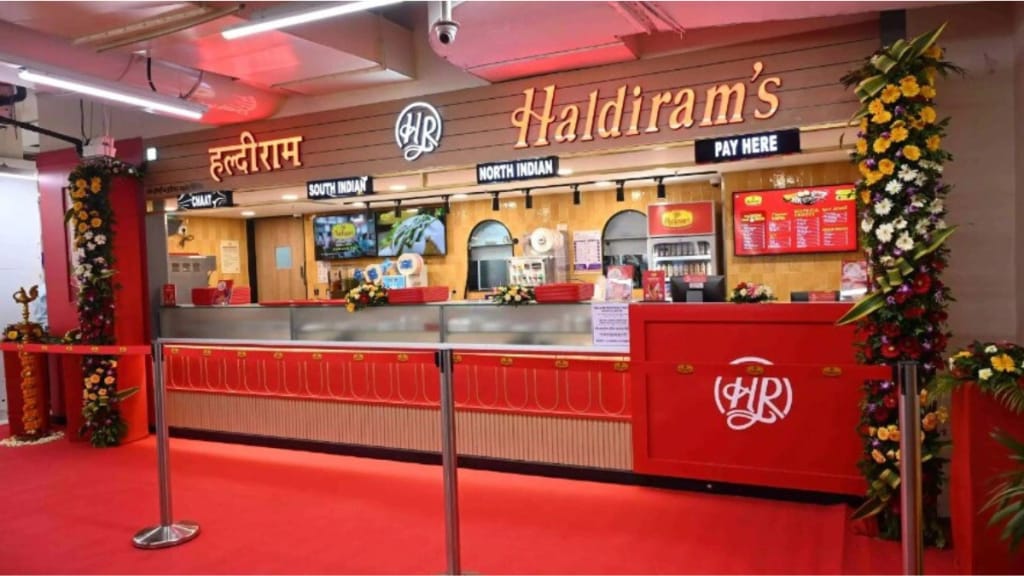What began as a small sweets and namkeen shop in Bikaner in 1937 has today grown into a $10-billion snack empire with a footprint in over 80 countries. Haldiram’s, founded by Ganga Bishan Agarwal, fondly known as Haldiram Ji, built its early reputation on a humble innovation: a distinctively flavoured bhujia made from moth beans, a departure from the chickpea flour (besan) versions popular at the time. The recipe, once a delicacy reserved for Bikaner’s royal family, became the foundation of a business that today dominates India’s organised namkeen market. Haldiram’s samosas once made it to space, carried by Indian-origin NASA astronaut Sunita WilliamsSunita Williams.
The split that created multiple Haldirams
Over the decades, the Agarwal family branched into multiple units. Ganga Bishan’s descendants expanded into Kolkata in the 1950s under the “Haldiram Bhujiawala” banner, with his eldest grandson Shiv Kishan Agarwal accompanying him. By the 1980s, the youngest brothers, Manohar Lal and Madhusudan Agarwal, took the brand to Delhi, giving it a national identity. Shiv Kishan expanded operations in Nagpur, while another branch of the family in Bikaner, led by Shiv Ratan Agarwal, created Bikaji, now a listed company.
By the 1990s, legal disputes over the “Haldiram” name split the businesses into four entities. Haldiram’s operations remain divided among the founding family’s branches. The Delhi unit is headed by brothers Manohar Lal and Madhusudan Agarwal, while the Nagpur business is overseen by their elder brother, Shiv Kishan Agarwal. In Bikaner, Shiv Ratan Agarwal runs Bikaji, and the Kolkata operations are led by Prabhu Agarwal.
The Delhi and Nagpur arms remain the biggest, with FY24 revenues of Rs 5,000 crore and Rs 4,000 crore, respectively. These two have now merged operations, a move seen as paving the way for a long-anticipated IPO.
Scaling beyond namkeen
Haldiram’s first big leap in manufacturing came in the 1950s with its Kolkata plant. By the 1980s, the Delhi facility was supplying the growing northern market, introducing single-serve affordable packs that appealed to middle-class consumers. In Nagpur, localisation of menus, including samosas and chole bhature, delivered rapid growth.
Through the 1990s and 2000s, the portfolio expanded beyond namkeens and sweets to biscuits, cookies, fruit concentrates and ready-to-eat meals like Pav Bhaji and Dal Makhani. Exclusive brand stores in major cities boosted visibility, while nitrogen-flushed packaging enhanced freshness and export viability. By 2017, Haldiram’s had overtaken both domestic and multinational rivals to become India’s largest snack maker.
Structured overseas expansion began in 2010, targeting the Indian diaspora before introducing Indian flavours to global consumers. Today, Haldiram’s sells in the USA, UK, UAE, Australia, Japan and more, tailoring products, including healthier baked snacks, for local tastes.
In 2024, the brand entered talks to acquire a majority stake in Prataap Snacks for $350 million to strengthen its potato chips portfolio. Its 400-plus products include Aloo Bhujia, Navratan Mix, Rasgulla, Kaju Katli, frozen snacks, bakery goods, beverages and millet-based health lines.
Digital and distribution reach
Haldiram’s products are sold through various exclusive outlets, supermarkets, convenience stores, e-commerce platforms like Amazon and BigBasket, and food aggregators like Swiggy and Zomato. Manufacturing hubs in Kolkata, Nagpur, Delhi and beyond support both domestic scale and export precision.
By the numbers
In FY24, Haldiram’s posted revenues of Rs 12,800 crore and net profits of around Rs 1,400 crore, delivering a five-year CAGR of 18%. The company holds an estimated 13% share of India’s organised savoury snack market, with namkeens contributing roughly 60% of total revenue and accounting for a dominant presence in that category. Its valuation stands at about $10 billion, with Temasek acquiring a 10% stake for $1 billion in March 2025, alongside interest from investors such as Alpha Wave Global.
Challenges and the road ahead
While poised for a market debut, Haldiram’s still navigates internal complexities, from historic family disputes to competition with ITC, Bikaji and Bikanervala. Limited penetration in southern India and consumer preferences for fresh over packaged snacks present hurdles. Yet, the growth of health-conscious snacking, sustainable packaging and e-commerce are major tailwinds. As the Delhi and Nagpur units unite, the IPO that once seemed “almost impossible”, as family members admitted in the past, appears firmly within reach. If executed, it would mark the next chapter in a business that has blended swadeshi roots with global ambitions, without losing the taste of home.

